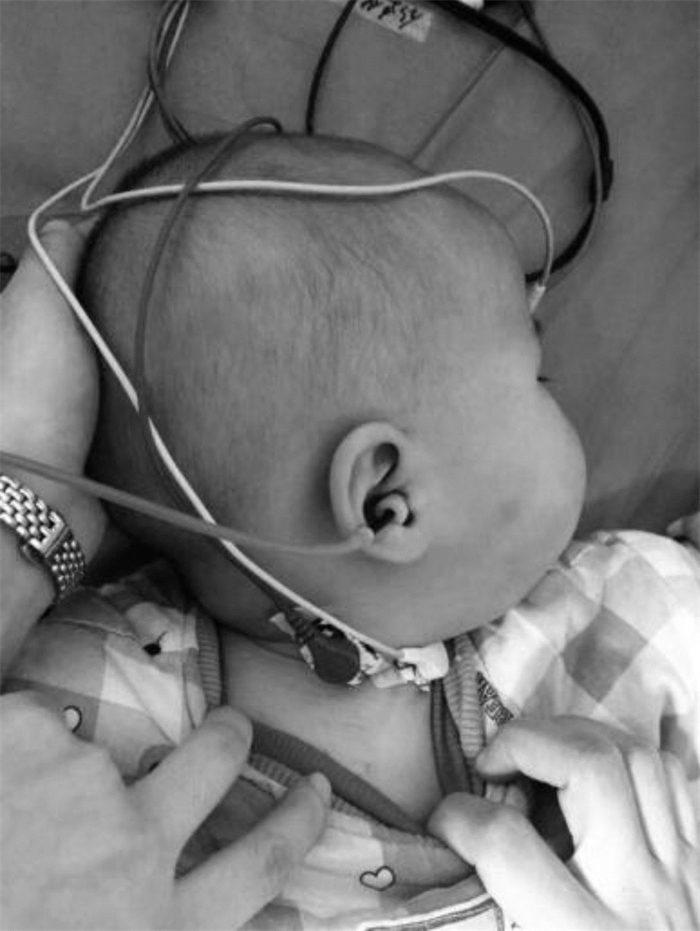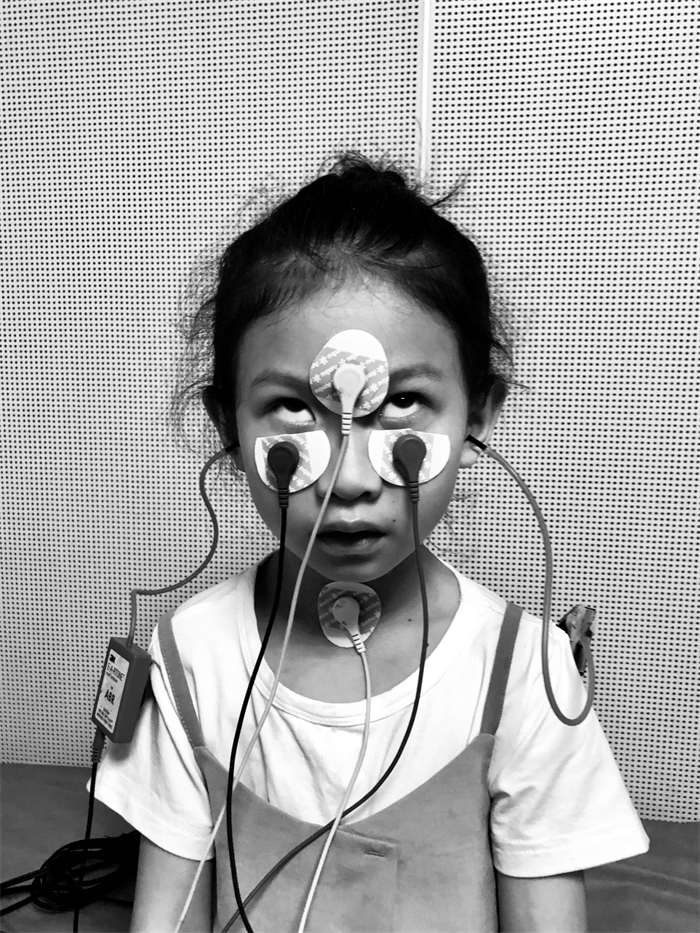Methods and advances in clinical application of vestibular evoked myogenic potentials in children
-
Abstract: Vestibular dysfunction, which may lead to delayed motor development and reduced quality of life, is an overlooked entity among children and adolescents. Vestibular evoked myogenic potential (VEMPs) is a common, safe diagnostic tool in adults for vestibular disorders. However, there is no related data for children and adolescents. We aimed to collect and assess normative VEMP data for adolescents. In this article, we analyzed the results of VEMPs in children in recent years, and summarized the common detection methods of VEMPs in children, the detection rate and variability characteristics of VEMPs in children of different ages, and the current status of clinical application of VEMPs in children.
-
Key words:
- child /
- vestibular dysfunction /
- vestibular evoked myogenic potential /
- otoconia
-

-
[1] Colebatch JG, Halmagyi GM, Skuse NF. Myogenic potentials generated by a click-evoked vestibulocollic reflex[J]. J Neurol Neurosurg Psychiatry, 1994, 57(2): 190-197. doi: 10.1136/jnnp.57.2.190
[2] Curthoys IS. The interpretation of clinical tests of peripheral vestibular function[J]. Laryngoscope, 2012, 122(6): 1342-1352. doi: 10.1002/lary.23258
[3] Sheykholeslami K, Megerian CA, Arnold JE, et al. Vestibular-evoked myogenic potentials in infancy and early childhood[J]. Laryngoscope, 2005, 115(8): 1440-1444. doi: 10.1097/01.mlg.0000167976.58724.22
[4] Hsu YS, Wang SJ, Young YH. Ocular vestibular-evoked myogenic potentials in children using air conducted sound stimulation[J]. Clin Neurophysiol, 2009, 120(7): 1381-1385. doi: 10.1016/j.clinph.2009.04.009
[5] Uchino Y, Sato H, Sasaki M, et al. Sacculocollic reflex arcs in cats[J]. J Neurophysiol, 1997, 77(6): 3003-3012. doi: 10.1152/jn.1997.77.6.3003
[6] Chen CN, Wang SJ, Wang CT, et al. Vestibular evoked myogenic potentials in newborns[J]. Audiol Neurootol, 2007, 12(1): 59-63. doi: 10.1159/000097248
[7] Wang SJ, Chen CN, Hsieh WS, et al. Development of vestibular evoked myogenic potentials in preterm neonates[J]. Audiol Neurootol, 2008, 13(3): 145-152. doi: 10.1159/000112422
[8] Chang CH, Yang TL, Wang CT, et al. Measuring neck structures in relation to vestibular evoked myogenic potentials[J]. Clin Neurophysiol, 2007, 118(5): 1105-1109. doi: 10.1016/j.clinph.2007.01.020
[9] Wang SJ, Yeh TH, Chang CH, et al. Consistent latencies of vestibular evoked myogenic potentials[J]. Ear Hear, 2008, 29(6): 923-929. doi: 10.1097/AUD.0b013e3181853019
[10] 张青, 宋辉, 胡娟, 等. 气导短纯音诱发的眼肌前庭诱发肌源性电位在健康青年人群中的波形特征[J]. 中华耳鼻咽喉头颈外科杂志, 2012, 47(1): 15-18. doi: 10.3760/cma.j.issn.1673-0860.2012.01.005
[11] Wang SJ, Weng WJ, Jaw FS, et al. Ocular and cervical vestibular-evoked myogenic potentials: a study to determine whether air-or bone-conducted stimuli are optimal[J]. Ear Hear, 2010, 31(2): 283-288. doi: 10.1097/AUD.0b013e3181bdbac0
[12] Chou CH, Hsu WC, Young YH. Ocular vestibular-evoked myogenic potentials via bone-conducted vibration in children[J]. Clin Neurophysiol, 2012, 123(9): 1880-1885. doi: 10.1016/j.clinph.2012.02.059
[13] Wang SJ, Hsieh WS, Young YH. Development of ocular vestibular-evoked myogenic potentials in small children[J]. Laryngoscope, 2013, 123(2): 512-517. doi: 10.1002/lary.23535
[14] Erenberg A, Lemons J, Sia C, et al. Newborn and infant hearing loss: detection and intervention. American Academy of Pediatrics. Task Force on Newborn and Infant Hearing, 1998-1999[J]. Pediatrics, 1999, 103(2): 527-530. doi: 10.1542/peds.103.2.527
[15] Xu XD, Hu J, Zhang Q, et al. Characteristics and clinical use of ocular and cervical vestibular evoked myogenic potentials for evaluating paediatric candidates for cochlear implants[J]. J Laryngol Otol, 2017, 131(1): 56-63. doi: 10.1017/S0022215116009634
[16] Xu XD, Zhang Q, Hu J, et al. The hidden loss of otolithic function in children with profound sensorineural hearing loss[J]. Int J Pediatr Otorhinolaryngol, 2015, 79(6): 852-857. doi: 10.1016/j.ijporl.2015.03.017
[17] 中华人民共和国卫生部. 人工耳蜗临床技术操作规范[J]. 中华耳鼻咽喉头颈外科杂志, 2007, 42(5): 323-323. doi: 10.3760/j.issn:1673-0860.2007.05.002
[18] 徐勇, 陈耔辰, 张玉忠, 等. 人工耳蜗植入对前庭诱发肌源性电位远期影响的初步研究[J]. 中华耳科学杂志, 2017, 15(4): 441-446. doi: 10.3969/j.issn.1672-2922.2017.04.011
[19] Madden C, Halsted M, Benton C, et al. Enlarged vestibular aqueduct syndrome in the pediatric population[J]. Otol Neurotol, 2003, 24(4): 625-632. doi: 10.1097/00129492-200307000-00016
[20] Sheykholeslami K, Schmerber S, Habiby Kermany M, et al. Vestibular-evoked myogenic potentials in three patients with large vestibular aqueduct[J]. Hear Res, 2004, 190(1/2): 161-168.
[21] 吴军, 王锦玲, 谢娟, 等. 大前庭水管综合征患者的听力学及前庭诱发肌源性电位检测的特点[J]. 临床耳鼻咽喉头颈外科杂志, 2010, 24(1): 25-27. https://www.cnki.com.cn/Article/CJFDTOTAL-LCEH201001010.htm
[22] Taylor RL, Bradshaw AP, Magnussen JS, et al. Augmented ocular vestibular evoked myogenic potentials to air-conducted sound in large vestibular aqueduct syndrome[J]. Ear Hear, 2012, 33(6): 768-771.
[23] Zhou YJ, Wu YZ, Cong N, et al. Contrasting results of tests of peripheral vestibular function in patients with bilateral large vestibular aqueduct syndrome[J]. Clin Neurophysiol, 2017, 128(8): 1513-1518. doi: 10.1016/j.clinph.2017.05.016
[24] 张玉忠, 张滟, 魏馨雨, 等. 双侧大前庭水管综合征患儿的前庭诱发肌源性电位特征[J]. 听力学及言语疾病杂志, 2019, 27(3): 233-237. doi: 10.3969/j.issn.1006-7299.2019.03.001
-





 下载:
下载:
